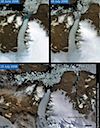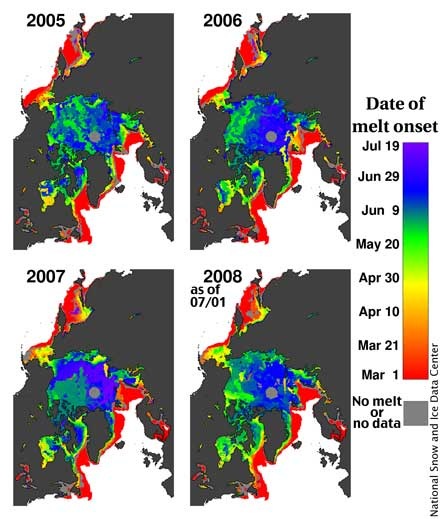 Arctic warming is taking a toll on more than sea ice: two of Greenland’s largest glaciers have experienced significant breakups over the last month, according to researchers at Ohio State University. The Petermann glacier in the far northwest of the island has lost a 29 square kilometre chunk of its floating ice tongue, and a big crack further back suggests another large piece could be about to break off. Meanwhile, the Jakobshavn Isbrae on the west coast – the largest glacier in Greenland – has retreated further inland this summer than at any time in the last 150 years, and possibly up to 6,000 years.
Arctic warming is taking a toll on more than sea ice: two of Greenland’s largest glaciers have experienced significant breakups over the last month, according to researchers at Ohio State University. The Petermann glacier in the far northwest of the island has lost a 29 square kilometre chunk of its floating ice tongue, and a big crack further back suggests another large piece could be about to break off. Meanwhile, the Jakobshavn Isbrae on the west coast – the largest glacier in Greenland – has retreated further inland this summer than at any time in the last 150 years, and possibly up to 6,000 years.
Further south, a team led by Ted Scambos at the University of Boulder has examined the rate of ice loss from the glaciers of south east Greenland, previously thought to be too small to contribute much to the overall mass balance of the ice sheet. Using a combination of laser altimetry and satellite imaging, they estimate that the region is losing about 100 cubic kilometres per year, a substantial part of the overall loss.
While we’re up there, the Arctic sea ice is still melting fast. Cryosphere Today shows the current area to be 3.68m km2, homing in on last year’s record. The fat lady’s still in her hotel…





